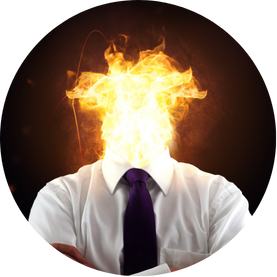“Heat is always good for pain.” This advice persists stubbornly—and is often incorrect. In acute inflammation or fresh injuries, heat can even exacerbate discomfort, while targeted cold provides quick relief. Conversely, chronically tense muscles often respond better to continuous heat. Those seeking high performance should understand temperature as a tool—applied precisely, it reduces pain, protects function, and accelerates the return to resilience.
Pain is not the same as pain. Acute pain is often associated with inflammationlocal immune response with swelling, warmth, redness, pain; here, cold dampens circulation and nerve conductivity, which reduces inflammation and pain. Chronic or tension-related complaints benefit more from thermotherapytargeted heat application, which lowers muscle tonebaseline tension of the musculature, increases tissue elasticity, and facilitates movement. Contrast therapyalternation between cold and heat utilizes both in rhythm to modulate circulation and pain perception. Hydrotherapytherapy in warm water combines heat, buoyancy, and gentle mobilization—a threefold effect on pain, stress, and mobility. The key is the appropriate match: cool acute irritation, warm tense or degenerative patterns, and smartly combine complex trajectories—always dosed and time-limited.
Targeted cold application reduces acute pain within minutes and can decrease the need for analgesics [1]. The alternation of heat and cold improves circulation, alleviates pain, and can increase range of motion and function in musculoskeletal complaints [2]. Continuous, low surface heat via electric heating systems significantly reduces muscle stiffness and increases pain tolerance—especially useful for chronic neck, back, and joint pain outside inflammatory phases [3]. Hydrotherapy in warm water leads to noticeable relaxation and pain reduction in many affected individuals; studies report high symptom relief after several days of applications and relevant effects on pain, function, and mental parameters [4] [5]. Important: Excess is harmful. Prolonged cold can damage skin and tissue; improper cryotherapy has led to frostbite in case reports [6] [7]. Heat on inflamed or infected areas can exacerbate discomfort—in acute gout, for example, cold was clearly superior, while heat favored flare-ups [8].
In the emergency department, intensive, precisely applied cryotherapy (wet, crushed ice) rapidly achieved stronger pain relief for acute musculoskeletal injuries than chemical cold packs—along with an additional effect: less opioid administration during the stay [1]. For high performers, this means: precise cold can not only enhance performance in the acute phase but also reduce the reliance on stronger painkillers. A scoping review on contrast therapy underscores its practical relevance: despite heterogeneous protocols, pain, function, mobility, and circulation improved in all included studies; however, robust guidelines for standardizing dosage and sequence for various diagnoses are still lacking [2]. This speaks for individualized use—clear structure but flexible duration and cycles. In the case of chronic muscle and joint complaints, continuous low-temperature heat is coming into focus. Expert consensus on electric heating systems describes significant benefits for neck, shoulder, lumbar spine, and knee issues: less pain, less stiffness, more daily function—as long as no acute inflammation is present and use remains time-limited [3]. Additionally, evidence on hydrotherapy indicates that warm water not only addresses pain and tone but also improves sleep, relaxation, and movement enjoyment; the effects are consistent, although often methodologically supported by moderate evidence [4] [5].
- Cold used correctly acutely: For fresh injuries, swelling, or acute inflammatory signs, apply targeted cold to the affected area for 10–20 minutes, preferably using wet, crushed ice in a bag with a thin cloth as skin protection. Then take a break, with a maximum total time of 20 minutes per hour. This reduces pain quickly and may lower the need for painkillers [1].
- Smart use of contrast: For tense muscles or after intense workouts, apply 10 minutes of heat followed by 10 minutes of cold, for 2–3 cycles. This promotes circulation, reduces muscle soreness, and improves mobility. Adjust intensity and duration based on your comfort, as there are no standard protocols yet [2].
- Continuous heat for stiffness: For chronic neck, back, or knee complaints without acute inflammation, use a low-level heat wrap or electric heating system with safety shutdown for 4–8 hours during the day. Aim: to relieve stiffness and increase pain tolerance and daily function. Do not place on inflammatory swollen areas [3].
- Regenerative hydrotherapy: Relax for 20–30 minutes in water heated to 34–36°C or consider a guided Watsu session. Effect: muscle tone decreases, pain and stress diminish, movement becomes easier. Particularly beneficial on recovery days or for chronic issues [4] [5].
- Safety etiquette: Always protect the skin (cloth between skin and ice/heat pad), do not apply cold for longer than 20 minutes at a time, and do not use heat on acutely inflamed or infected areas. Immediately discontinue if there is numbness, discoloration, or burning pain. Improper prolonged use can lead to frostbite or circulatory disorders—avoid DIY extremes [6] [7] [8].
The future of temperature therapy is personalized: Wearables and smart heating systems could soon adjust dosage, duration, and cycles based on tissue temperature, swelling, and pain feedback. Clear protocols for contrast applications depending on diagnosis—from post-intensive training to osteoarthritis—are anticipated, as well as hybrid setups that intelligently combine cold, heat, and movement.
This health article was created with AI support and is intended to help people access current scientific health knowledge. It contributes to the democratization of science – however, it does not replace professional medical advice and may present individual details in a simplified or slightly inaccurate manner due to AI-generated content. HEARTPORT and its affiliates assume no liability for the accuracy, completeness, or applicability of the information provided.













